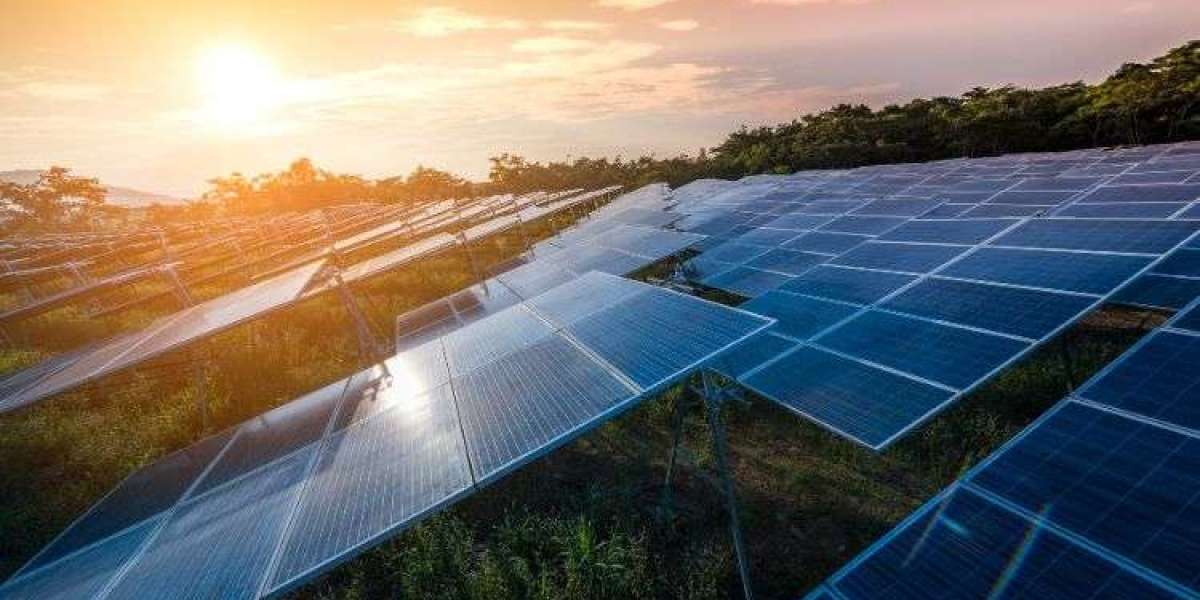The global solar farm market size was approximately USD 98.07 billion in 2023. The market is projected to grow at a CAGR of 13.1% between 2024 and 2032, reaching a value of around USD 309.01 billion by 2032. This growth is driven by the increasing adoption of renewable energy sources, the declining cost of solar panels, and supportive government policies promoting sustainable energy practices. In this blog post, we will explore the current state of solar farms, key trends shaping their future, and innovative technologies that are revolutionizing the industry.
Overview of Solar Farms:
Solar farms, also known as solar power plants or solar parks, are large-scale installations that generate electricity from sunlight. These farms can take various forms, including ground-mounted arrays, rooftop installations, and even floating solar farms on bodies of water. The primary components of a solar farm include solar panels, inverters, mounting structures, and monitoring systems. Solar farms are designed to capture and convert sunlight into electricity, which can then be fed into the grid or stored for later use.
Trends in Solar Farms:
Several trends are driving the growth and evolution of solar farms. One of the most significant trends is the increasing efficiency of solar panels. Manufacturers are constantly innovating to improve the efficiency of solar cells, allowing them to generate more electricity from the same amount of sunlight. Another key trend is the development of energy storage technologies, such as batteries, that allow solar farms to store excess energy for use when the sun is not shining. This helps to address one of the main challenges of solar power, which is its intermittent nature.
Advancements in solar tracking systems are also shaping the future of solar farms. These systems allow solar panels to track the movement of the sun throughout the day, ensuring that they are always positioned to capture the maximum amount of sunlight. This can significantly increase the overall energy output of a solar farm. Additionally, the integration of IoT (Internet of Things) and AI (Artificial Intelligence) technologies is enabling smart solar farm management, optimizing energy production and maintenance schedules.
Another trend in the solar farm industry is the growth of community solar projects. These projects allow multiple individuals or organizations to share the benefits of a solar farm, even if they are unable to install solar panels on their own property. Community solar projects can help to democratize access to clean energy and reduce the reliance on traditional fossil fuels.
Innovations in Solar Farms:
Several innovative technologies are driving the advancement of solar farms. Bifacial solar panels, for example, are designed to capture sunlight from both the front and back sides of the panel, increasing their efficiency. These panels are particularly well-suited for use in solar farms, where space is not a limiting factor. Additionally, the use of drones and satellite imaging is revolutionizing the way solar farms are designed, constructed, and maintained. These technologies can provide detailed aerial surveys of potential solar farm sites, identify optimal locations for solar panels, and even inspect panels for damage or wear.
Another innovation in the solar farm industry is the development of hybrid solar farms, which combine solar power with other renewable energy sources, such as wind or hydroelectric power. By diversifying their energy sources, hybrid solar farms can ensure a more stable and reliable power supply, even when the sun is not shining. This can help to address some of the challenges associated with the intermittent nature of solar power.
Environmental and Economic Impact:
The growth of solar farms has significant environmental and economic benefits. One of the key advantages of solar energy is its ability to reduce carbon emissions and mitigate climate change. By generating electricity from sunlight, solar farms can help to reduce the reliance on fossil fuels, which are a major source of greenhouse gas emissions. Additionally, the solar industry is a major source of job creation and economic growth. The construction and operation of solar farms require a wide range of skills and expertise, creating employment opportunities in areas such as engineering, construction, and maintenance.
Challenges and Future Outlook:
While the future of solar farms looks promising, there are still several challenges that need to be addressed. One of the main challenges is land use and environmental impact. Solar farms require large amounts of land, which can lead to conflicts with other land uses, such as agriculture or conservation. Finding suitable locations for solar farms that minimize their impact on the environment is an ongoing challenge for the industry.
Another challenge is grid integration. Solar farms produce electricity intermittently, depending on the availability of sunlight. This can create challenges for grid operators, who must balance the supply and demand for electricity in real time. Advances in energy storage technologies, such as batteries, can help to mitigate these challenges by allowing solar farms to store excess energy for use when the sun is not shining.
Click here to checkout our other reports:- https://www.expertmarketresearch.com.au/








